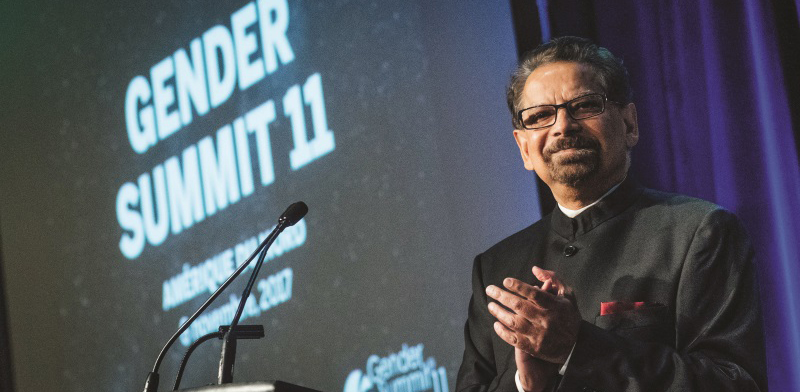Elle Crosby - 22 November 2017
Mario B. Pinto welcomes attendees to the 11th international Gender Summit held in Montreal from November 6 to 8 to discuss diversity and inclusion in industry, academics and government. Courtesy of Martin Lipman
The 11th international Gender Summit held in Montreal from November 6-8 aimed to enable multi-stakeholder dialogue on gender issues in science, industry and government. While there are many fields in which there are gender imbalances, the mining industry has one of the most severe gender gaps.
In 2013, Women in Mining (UK) and PwC published a report on trends of women in senior leadership positions in the mining industry and found that it has the lowest number of women on its boards of any other industry, with women occupying only five per cent of the board positions of the top 500 global listed mining companies.
The report also found that profit margins are higher for mining companies with women on their boards.
Yet four years later Canadian miners continue to lag behind other TSX-listed companies in adding women to their boards and C-suites, as evidenced in a report from Osler, Hoskin and Harcourt LLP that was released in October.
Part of the problem could be that there is such a small pool of women getting into the field. Women only represent 13 per cent of the mining engineers in Canada, for example.
What is it about mining that makes it so difficult to recruit and retain women? Mario Pinto, president of the Natural Sciences and Engineering Research Council of Canada (NSERC), and co-host of the Gender Summit this year, thinks he may have the answer.
“Women generally want to make a difference,” said Pinto. “If that’s the driver, then how do you make mining more attractive?”
“There’s a greater understanding now of environmental contamination, and with that consciousness there’s an opportunity to engage women. If we’re going to decontaminate a mine site, we need [to design] the tools, and that could appeal to women because that makes a difference for the planet. So I think it needs to be marketed differently,” Pinto continued.
Catherine Morency, a panelist at Gender Summit and a professor in the department of civil, geological and mining engineering at Polytechnique Montreal echoed Pinto’s opinions. “From what I see, when you have this
There are studies to back up these opinions. Elizabeth Cannon, president of the University of Calgary and a panelist at Gender Summit, was featured in CIM’s latest book, Women of Innovation: The Impact of Leading Engineers in Canada, which recounts the stories of 20 of the top engineers in Canada. In the book, she speaks of research she conducted in the 1990s in an attempt to understand the underrepresentation of women in engineering.
“What we found in one study that really resonated with me is that women wanted challenging careers as much as men; in fact, they were willing to work harder than the men that were surveyed. But they needed to connect that effort to a personal value of theirs,” Cannon explained.
As more and more of the innovations in mining revolve around limiting the negative environmental impact of operations, perhaps we can find new ways to market mining as an inclusive sector passionate about sustainability and attract more goal-oriented and diverse talent to our industry.
 - dev.png)


